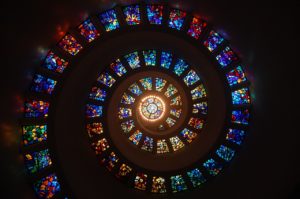A relatively modern event in the history of world art is the evolution of the contemporary art in Vietnam. Previously for almost half of a century, Vietnamese art was intended to serve a collective goal. And the goal was revolution. Nudes, still-life and other such forms of arts were considered a betrayal to the socialist ideology. It however, took a more definite shape under the influence of Doi Moi, Vietnam’s Perestroika, who took a more liberal approach and gave enough freedom to the Vietnam artists to come out of their shell and turn to their individual visions. And this resulted in the Vietnamese contemporary arts to reach its peak towards the end of the eighties with plenty of artists participating in several exhibitions in various parts of the nation. The recent economic development in Vietnam further helped the artists to reach a feat which was previously impossible for them. Now it was possible for the Vietnamese artists to achieve international success.
During the feudal times, unlike their other counterparts, the Vietnamese arts were more about sculptures and designs of temples and pagodas. At the end of the nineteenth century, the French introduced the technique of oil-painting to Vietnam and in 1925 they established the ‘Ecole des Beaux-Art l’Indochine’ in Hanoi. This was the beginning of the development of a professional class of painters in Vietnam. However, the education to these artists was given mostly following the model of the French arts. It was more about nature and landscapes in a realistic and impressionistic style. But this once again changed due to the war against France. The war led to the separation of the nation into the North and South Vietnam, and then there was a war between the North and South. This divided the style and techniques of Vietnam arts. The artists from the North (under influence of the Soviet Union and the People’s Republic of China) turned in the direction of the social-realistic stream, while the southern artists embraced western trends, influenced by the presence of the Americans. However, neither the influence of the Soviet Union nor of the western countries was decisive in the development of Vietnamese Modern Art; it was rather their concern to survive the war that influenced the development. It was definitely not the time for experimentation.
In recent times, the contemporary Vietnamese artist is free to represent his or her inner self in his or her work. In spite of this new liberal climate, Vietnamese art is not ‘innovating’ in a European sense. Vietnamese painting does not demand philosophical questions about the definition of painting itself. This springs from the undeniable link between Vietnamese art and the political and social history of its country.
However, the recent years have been exceptionally well for the Vietnamese contemporary artists. Many of them received invitations from different parts of the world to exhibit their arts and have been recognized. The change in the Vietnamese contemporary art can be observed in the arts itself. It can surely be said that Vietnamese contemporary art has moved forward towards a progressive realism and has thus allowed its patrons to identify the work of art with their lives.
Submitted by:Ronn JonesThis article is written by Ronn Jones, a marketing expert with years of experience in branding and internet marketing. Check out more information on Vietnamese contemporary art at http://www.vietnamartist.com/ |





